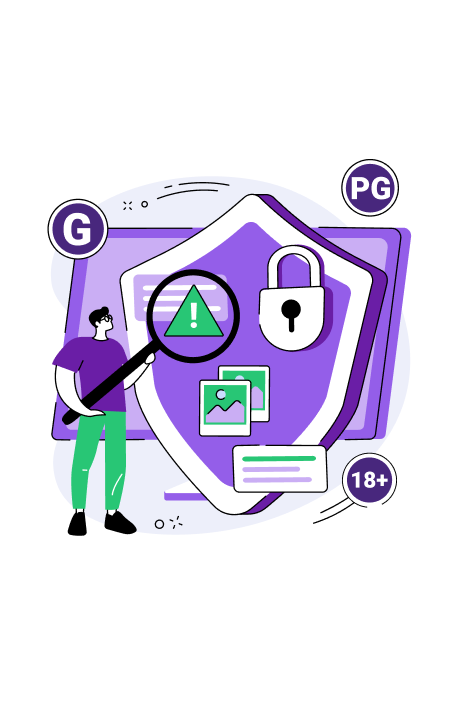
Using moderation tools and filtering to manage harassment
Online harassment is a prevalent issue that can affect content creators in a significant way. According to a survey by the Pew Research Center, 41% of Americans have experienced online harassment, and 66% have witnessed it happen to others. The prevalence of online harassment can have a significant impact on content creators, who are often the targets of hateful comments, personal attacks, and threats.
Managing online harassment is essential for content creators to maintain their mental health, safety, and productivity. Here are some reasons why content creators should take online harassment seriously and manage it effectively:
1. Protecting mental health: Negative influences such as online harassment can take a toll on mental health, causing anxiety, depression, and other mental health issues. Content creators who experience online harassment are bound to feel anxious and afraid to create content, which can easily hinder their productivity and creativity.
2. Ensuring safety: Things in such situations can escalate into physical threats, stalking, or other forms of offline harassment. It’s imperative for content creators who experience online harassment to take steps to protect their safety and report any threats to the authorities.
3. Maintaining a positive online community: Online harassment can negatively impact the community of followers and supporters around content creators. It can create an environment of negativity, hate, and exclusion, which can drive away positive and constructive voices from the community.
4. Upholding professional reputation: It’s never a good space to be in when online harassment affects a content creator’s professional reputation and potentially harms their career. In such situations, content creators must step up and take online harassment seriously and respond to it in a professional and responsible manner.
Different types of moderation tools and filtering options
There are several types of moderation tools and filtering options available to manage online harassment, including:
1. Comment moderation: This tool allows moderators to approve or reject comments before they are posted publicly. It can help prevent the spread of harmful content and reduce the likelihood of harassment in the comments section.
2. Keyword filters: They allow moderators to block specific words or phrases from being posted in the comments or other user-generated content. This can be useful for blocking hate speech or other offensive language.
3. User blocking: This tool allows users to block other users from interacting with them online. It can be useful for preventing further harassment from specific individuals.
4. Reporting tools: Reporting tools allow users to report abusive or inappropriate content to moderators or site administrators. This can help moderators quickly identify and remove harmful content.
5. Artificial Intelligence (AI) moderation: AI moderation tools can automatically detect and flag potentially harmful content, such as hate speech or personal attacks. This can be useful for identifying and removing harmful content before it spreads.
6. Human moderators: Having human moderators who can review content and respond to reports can be effective in addressing harassment and enforcing community guidelines.
Potential benefits of using moderation tools
There are several potential benefits of using moderation tools to manage online communities and address online harassment:
1. Promoting a safe and inclusive environment: By using moderation tools to address harassment and other forms of harmful behavior, online communities can promote a safer and more welcoming environment for all users.
2. Reducing harm to individuals: Moderation tools can help prevent harmful content from being seen by others, reducing the harm caused to individuals who may be targeted by online harassment.
3. Protecting brand reputation: Companies and organizations that run online communities can protect their brand reputation by actively moderating and addressing harassment. This can help to maintain user trust and loyalty.
4. Saving time and resources: Moderation tools can help automate the process of identifying and addressing harmful content, reducing the time and resources required to manage online communities.
Tips for effectively using moderation tools
Here are some tips for effectively using moderation tools to manage online communities and address online harassment:
1. Clear community guidelines: Before implementing moderation tools, it’s important to establish clear community guidelines that define what is and is not acceptable behavior. These guidelines should be easily accessible and prominently displayed in the community.
2. Use a combination of moderation tools: No single moderation tool can completely prevent online harassment. A combination of tools and strategies may be necessary to effectively manage and prevent harassment in online communities.
3. Regularly review and update moderation policies: Online communities are dynamic and ever-changing, and so are the tactics used by those who engage in harassment. It’s important to regularly review and update moderation policies to ensure they are effective and up-to-date.
4. Balance moderation with freedom of expression: While moderation is important for preventing online harassment, it’s also important to balance it with freedom of expression. It’s important to avoid over-moderation, which can stifle open dialogue and limit creative expression.
5. Be transparent: Transparency is important for building user trust and confidence in moderation practices. Online communities should be transparent about how moderation tools are used and how decisions are made to remove or block content.
Conclusion
Managing online harassment through the use of moderation tools is essential for creating safe and inclusive online communities. Online harassment can have significant negative impacts on individuals, ranging from psychological distress to economic harm, and it can also harm the reputation of the community and its stakeholders. Moderation tools can help prevent this by quickly identifying and removing harmful content and promoting positive behaviors.